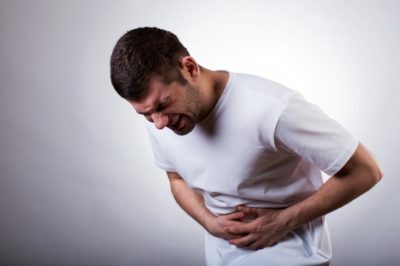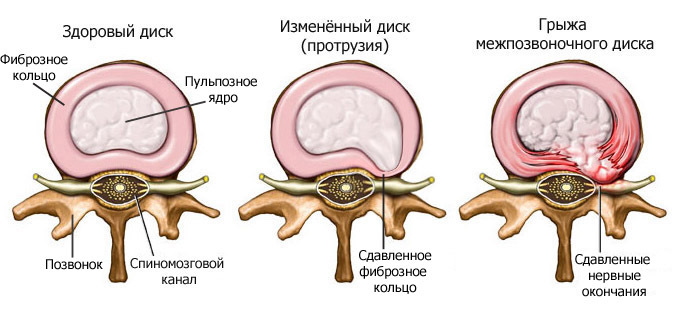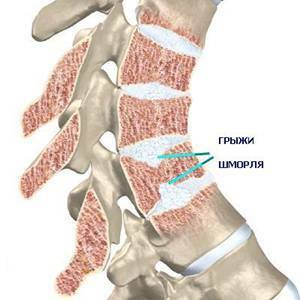1 The main factors of the development of the disease
Despite the fact that the hiatal hernia is rare, all the causes and predisposing factors of their development are already well known. All causes of pathology can be conditionally divided into congenital and acquired. It is worth noting that most often birth defects are the cause of the appearance of a hiatal hernia. In this case, the problem can be covered both in hernia pockets, which are formed during intrauterine development, as well as in the general underdevelopment of the diaphragm. The secondary acquired reasons for the formation of the hiatal hernia are more diverse. The most common acquired predisposing factors for the appearance of hiatal hernia include:
- excess body weight;
- frequent overeating;
- trauma of the chest and abdominal cavity;
- age changes;
- performed surgical interventions;
- increased intrauterine pressure;
- prolonged cough;
- predisposition to constipation;
- excessive physical activity.
In some cases, malignant and benign tumors developing in the region of the aperture opening and in the abdominal cavity may provoke the development of the hiatal hernia. In extremely rare cases, the emergence of a pathological condition, such as a hiatal hernia, can occur in the body of a pregnant woman. An enlarged uterus with a growing fetus creates conditions for mixing internal organs located in the abdominal cavity.
-
 IMPORTANT TO KNOW! Gastritis? Ulcer? To have a stomach ulcer not turned into cancer, drink a glass. ..Read the article & gt; & gt;
IMPORTANT TO KNOW! Gastritis? Ulcer? To have a stomach ulcer not turned into cancer, drink a glass. ..Read the article & gt; & gt;
Another reason for the formation of a hiatal hernia is the general weakening of the daphagmal muscle. Typically, this phenomenon is not uncommon in people who lead a sedentary lifestyle. With physical activity, a person begins to breathe deeper and more often, which, in turn, supports the muscles of the diaphragm in tonus. If a person leads a sedentary lifestyle, lack of physical activity gradually weakens the muscles of the diaphragm and they lose their tone.
2 Symptomatic manifestations of the disease
Symptoms of hiatal hernia of the diaphragm largely depend on the degree of development of the pathological process of protrusion of the internal organs. For example, at 1 degree of a hernia of this type, most people do not even suspect they have a problem, as only from time to time feel a feeling of discomfort in the stomach or heartburn. Also, the hiatal hernia of the 1st degree is manifested by the pain sensations in the abdomen in the bent position of the body. Similar signs are due to the fact that at the first stage of the development of the pathological process only a small segment can protrude into the esophagus, but under certain circumstances this site returns to its anatomical site.

Recommended to consult
- Is it possible to treat inguinal hernia without surgery
- How to identify umbilical hernia in adults
- How to treat a hernia of the esophagus
- Effective remedy for gastritis and stomach ulcer
Currently, if there is a 1 degree of hiatal hernia in the elderly, targeted treatment may notrequired, since in this case such a state is borderline and is associated with the age-related changes observed in the human body. Often patients do not give such short-term symptomatic manifestations due attention. In the future, signs of hiatal hernia can rapidly increase, which is caused by an ever increasing bulge of internal organs.
-
 Gastroenterologist. IMPORTANT: "I beg you, if you began to worry about abdominal pain, heartburn, nausea, do not in any way do gases. .."Read more & gt; & gt;
Gastroenterologist. IMPORTANT: "I beg you, if you began to worry about abdominal pain, heartburn, nausea, do not in any way do gases. .."Read more & gt; & gt;
Usually the symptomatic manifestations appear more clearly when overeating. At 2 degrees of development of a hiatal hernia the following symptomatic manifestations can be observed:
- severe heartburn;
- nausea;
- belching;
- swallowing disorders;
- burning pain behind the sternum;
- abdominal pain;
- hiccups;
- dysphagia;
- anemia;
- blue area around the mouth;
- heart palpitations;
- shortness of breath.
Under certain conditions, additional symptoms may appear. As the area of protrusion increases, symptomatic manifestations can be greatly enhanced. Given that most of the signs observed in the hiatal hernia are not specific and can not only indicate only this pathological condition, often to determine the cause of the emergence of a state requires a comprehensive diagnosis.
TIP FROM THE MAIN GASTROENTEROLOGIST
Korotov SV: "I can recommend only one remedy for the rapid treatment of Ulcer and Gastritis, which is now recommended by the Ministry of Health. .." Read testimonials & gt; & gt;

3 Diagnostic methods
More than 35% of people with hiatal hernia only suffer from symptomatic symptoms from time to time, therefore do not seek qualified help. In other cases, the existing intense signs cause a person to seek qualified help from a gastroenterologist. In the case of detecting hiatal hernia, instrumental studies are leading, including with the help of an esophagoscope. After a thorough examination of the esophagus, a small piece of tissue is also taken to carry out a biopsy to exclude oncological diseases. In addition, actively used in the diagnosis of hiatal hernia, such research methods as:
- computed tomography;
- endoscopy with contrast agent;
- radiography of the abdominal and thoracic cavity;
- general clinical analyzes.

In some cases, the identification of the root cause of the appearance of hiatal hernia allows more effectively to prescribe the treatment of this pathological condition.
4 Necessary therapy
Currently, both conservative and surgical methods of therapy are used in the treatment of hiatal hernia. In the event that such a pathological protrusion of the esophagus is not accompanied by the appearance of severe symptoms, doctors may take a wait-and-see attitude. The patient is required to undergo preventive examinations every six months. As a rule, with such a mildly expressed current of hiatal hernia, drug therapy is not performed, but a person needs to observe a special sparing diet. In the presence of severe symptoms, conservative therapy is usually prescribed, which implies:
- therapeutic exercise;
- diet;
- reception of prokinetics;
- use of inhibitors and antisecretory agents.
Taking medications can reduce the manifestations, including preventing the occurrence of heartburn and nausea. Therapeutic physical exercises can significantly improve the state of the muscles of the diaphragm. Correctly selected therapeutic exercises contribute to the return of the esophagus and part of the stomach to the anatomical sites and their fixation.
The diet also plays an important role in the treatment of hiatal hernia.
The diet should consist of the most simple products that are easily digested, as overeating and consumption of food rich in fats and carbohydrates, enhances the symptomatic manifestations. From the diet of the patient it is necessary to completely exclude foods that contribute to the development of constipation.
In the event that conservative treatment did not allow for a pronounced improvement, a surgical operation is indicated. If after a surgical or conservative treatment a person continues to adhere to the prescribed diet and does not raise significant weight, which is contraindicated to him, the risk of relapse is extremely unlikely.
- 1 Main factors of development of the disease
- 2 Symptomatic manifestations of the disease
- 3 Diagnostic methods
- 4 Necessary therapy
When such a diagnosis as a hiatal hernia is made, what is it to understand at once to a person is not so simple. In fact, the hiatal hernia is a pathological protrusion of the abdominal cavity organs, including the stomach, esophagus, and in some cases other elements. In the process of development of the condition, the organs protrude through the natural opening of the diaphragm in the place where the esophagus passes.
As the axial hiatal hernia develops, the bulging organs move to the chest. This pathological condition, as a rule, proceeds in a chronic form, and the brightest clinical manifestations are most acute only during relapses, which can be extremely short-lived. In the overwhelming majority of cases, when medical and conservative means fail to achieve a marked improvement in the patient's condition, a surgical operation is needed to eliminate such protrusion and to cover the enlarged esophagus.
Do you have gastritis?
GALINA SAVINA: "How easy is it to cure gastritis at home for 1 month. A proven method - write down a recipe. ..!"Read more & gt; & gt;



